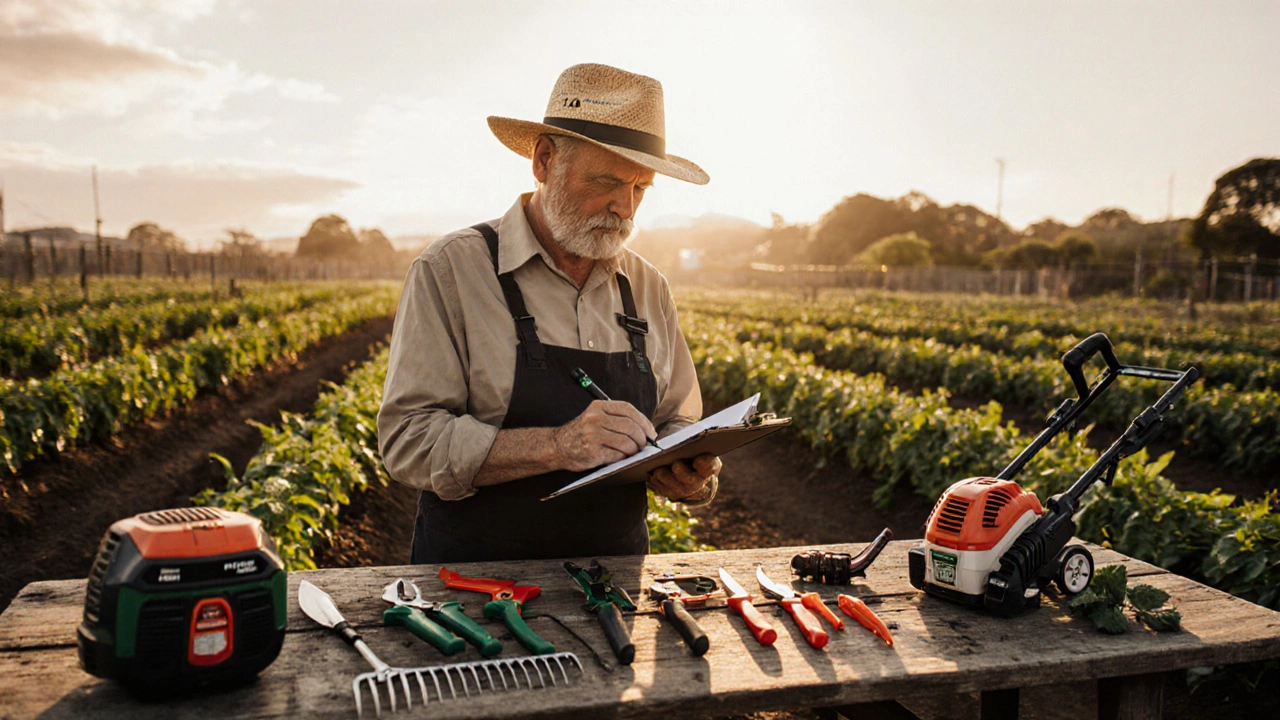Tool Quality: Why It Matters & How to Pick the Right Gardening Tools
Ever wondered why some gardeners swear by a specific shovel or pruner while others struggle with broken handles? The secret is simple – quality tools make the work easier, faster, and safer. In India’s varied climates, a rust‑prone spade can turn a routine planting session into a nightmare. Investing in solid tools saves time, reduces injury risk, and often pays for itself in better yields.
Choosing High‑Quality Tools
First thing first: material matters. Look for stainless steel blades on pruners or carbon‑steel shafts on hoes. These metals resist rust, hold a sharp edge longer, and handle the heat of sunny days better than cheap alternatives. Next, check the grip. Ergonomic handles made from rubber or foam reduce hand fatigue, especially when you’re working on a large plot or a balcony garden.
Don’t forget the brand reputation. Local Indian brands that source steel domestically often understand the region’s soil and weather better than imported budget options. A quick search on forum threads or farmer groups can reveal which tools survive monsoon mud and which fall apart after a few uses.
Price is another clue. While a $10 trowel might look tempting, a $25 version with a reinforced head usually lasts several seasons. Think of it as a long‑term investment – the cost of replacing a broken tool every month adds up quickly.
Maintaining Your Tools for Longevity
Even the best tools need love. Clean them after each use: wipe off soil, rinse with water, and dry thoroughly to prevent rust. For metal parts, a light coat of oil keeps the surface lubricated and stops corrosion. Sharpening is essential – a dull pruner tears stems, inviting disease. A simple honing stone or a file does the trick; just follow the blade’s original angle.
Store tools in a dry place. A garden shed with good ventilation works, but avoid leaning tools against walls where moisture can settle. Hanging them on a pegboard not only saves space but also keeps each piece from banging into another, which can cause dents or bends.
Regular checks save headaches later. Tighten any loose bolts on handles, replace worn grips, and inspect wooden handles for cracks. If you notice a handle wobbling, a quick fix with wood glue or a replacement can extend the tool’s life by years.
Finally, match tools to tasks. Using a light hand rake for heavy debris just creates wear faster. A sturdy garden fork or spade for digging is worth the extra effort, and it prevents you from over‑exerting yourself. Remember, the right tool for the right job keeps both you and your garden healthier.
By focusing on material, ergonomics, brand trust, and proper care, you’ll build a toolbox that supports every gardening project – from balcony herb beds to large vegetable fields. Good tool quality isn’t a luxury; it’s the foundation of a thriving garden.
Best Garden Tool Brands on the Market
Discover the top garden tool brands, how they compare on durability, price, and warranty, and get a buying guide to choose the right tools for your gardening needs.
Best Garden Tools: Who Makes the Highest Quality Hand Tools?
This article digs into which companies make the highest quality garden hand tools. It compares top brands, explains what actually counts as 'high quality,' and drops tips on spotting lasting tools before you buy. From forged steel pruners to indestructible trowels, get the full scoop on what separates a good garden tool from one that'll end up in the trash. You'll even get pointers on caring for your tools so you get the most out of your money. Quick, straight answers for both new and seasoned gardeners.
About
Garden Tools
Latest Posts


Root Rot Signs: Spotting Trouble in Your Indoor Plants
By Alden Thorne Feb 9, 2025

Best Additions to Loosen Up Garden Soil
By Alden Thorne Feb 24, 2025

Why Do We Cry While Cutting Onions? Exploring the Science and Solutions
By Alden Thorne Feb 27, 2025


